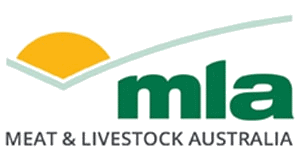B.FLT.1021 - Te Pari Auto-handler Australian feedlot commissioning site
Did you know this project commissioned an automated induction crush in a commercial feedlot?
| Project start date: | 04 November 2022 |
| Project end date: | 15 March 2025 |
| Publication date: | 27 November 2024 |
| Project status: | Completed |
| Livestock species: | Grain-fed Cattle |
| Relevant regions: | Victoria |
|
Download Report
(0.6 MB)
|
|
Summary
This project evaluated a cattle auto handler developed by Te Pari as part of MLA project B.FLT.1013. The auto handler features automated catch and restraint, automated delivery of chemicals and pharmaceuticals, automated weighing and software integration. Over a span of a year, 1,238 animals were inducted through the chute in 10 separate induction events, at a feedlot site located in Victoria.
Objectives
1. Evaluate the performance of the automated features within the Te Pari Auto Induction Chute over twelve months in a commercial feedlot.
2. Study the animal welfare impacts.
3. Determine if there is any inventory shrink in drug use.
4. Evaluate tasks, labour requirements and study processing rates.
5. Evaluate maintenance and repair requirements.
6. Determine the value proposition for the Auto Induction Chute based on commercial feedlot results.
Key findings
• The Automated Induction Chute showed a small positive value proposition.
• Reduction in labour units can offset the additional cost of the automated chute.
• The automated chute was reported as being less intensive and demanding to operate.
• Automated backline has the potential to improve safety by distancing the operator from drench.
Benefits to industry
Benefits to the wider beef industry from automating induction procedures are as follows:
• Calmer cattle through induction are better (Buckley, 2021) from an animal welfare perspective, leading to less environmental induced stress.
• Skill shortages are reduced due to the less demanding operator interaction with the chute.
• A reduction in labour units allowing for increased profits.
• Drug and medication inventory can be optimised by standardising the delivery process.
• A reduction in workplace injuries as contact with cattle and medication is reduced.
MLA action
MLA continues to work with ALFA to develop automated systems in feedlots that reduce labour, time and safety risk for both animals and staff.
Future research
There is room to minimise all external noise, and limit unnecessary knowledge and sunstrike. Further research could include enhancements to feedlot software integration and standardisation of application across the industry. The value proposition of additional automation shows some benefit in the reduction of labour units. This must be balanced against the increased induction times that were seen over the trial. Ongoing improvements around task allocation will see a reduction in cycle time and a better overall result into the future.
More information
| Project manager: | Ainsley Smith |
| Contact email: | reports@mla.com.au |
| Primary researcher: | Te Pari Products Pty Ltd |


